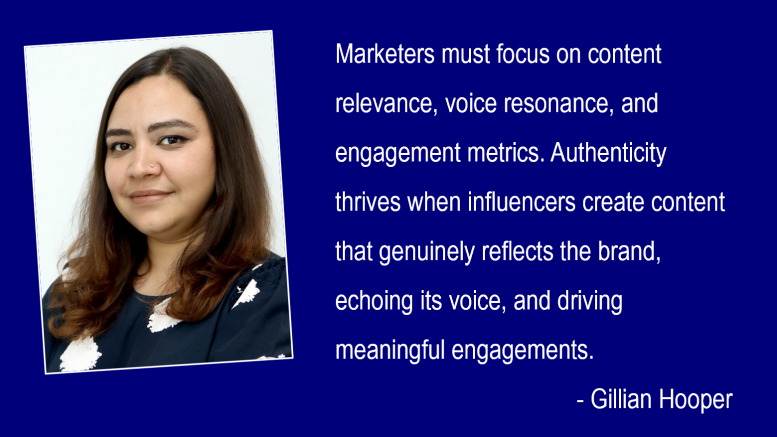There is an influencer born every 30 seconds on social media. Each one promises to drive authentic conversations among their followers for the brands they partner with. But how many deliver on that promise? With the ability for influencers to buy followers, how can you ensure authenticity and credibility, which is the primary objective of influencer collaborations?
How to spot the right influencer
Telling the ‘real’ influencers from the ‘fake’ can be a bit tricky for brands. More than boasting big follower counts; they engage with their audience and spark conversations. This boosts their engagement rate. As a rule of thumb, any good influencer will have a 1% to 5% engagement rate. You can get a fair idea of the engagement rate from the last 10-20 posts of an influencer. While there are paid tools which can help you calculate this number, if you want a quick job to make an assessment take the total engagement and divide it by total followers, then multiply it by 100%. This number will give a sense of how many followers actively engaged with the most recent most. Not the most scientific method but it helps when trying to find the right influencer, without the support of a paid tool.
On the other hand, to spot a ‘fake influencer’, you can check their follower list to see if they have actual usernames or profile pictures. Watch out for any sudden jumps in followers (an indication of bought followers). Lastly, see if their content truly connects with the brand. By paying attention to these details, brands can make sure they team up with influencers who truly connect with their audience and fit well with the brand story.
Striking the right balance
It is true that identifying authentic influencers has become a formidable task, but it is equally true that with the right influencer, a brand’s online presence can be virtually transformed. The key lies not just in having them endorse the brand but in selecting those who seamlessly embody its personality and ethos. This alignment ensures that every step of the influencer marketing strategy appears natural and organic.
Marketers must focus on content relevance, voice resonance, and engagement metrics. Authenticity thrives when influencers create content that genuinely reflects the brand, echoing its voice, and driving meaningful engagements. Rather than imposing rigid scripts, brands should empower influencers to showcase products in their unique, creative styles, fostering an authentic connection with their audience.
Choose a different path
One of the ways to choose an influencer for your campaign is to go off the beaten path. For instance, the increasing popularity of micro and nano influencers is an interesting trend to follow. These influencers, with fewer followers than mega or celebrity influencers, stand out for their strong engagement rates, forming a closer connection with their audience, which benefits brands. Another trend is brands preferring ongoing partnerships with influencers instead of one-off sponsored posts.
Navigating the regulatory landscape: ASCI’s role
The Advertising Standards Council of India (ASCI) has set clear directives for influencer marketing, asserting the need for transparent collaborations. In their guidelines, ASCI emphasises the need for clear communication and disclosure. Influencers are encouraged to be transparent about their partnerships with brands, making it explicit when their content is sponsored or promotional. This transparency is vital to maintain the trust of the online audience.
For brands and marketers, compliance with ASCI guidelines is not just a regulatory requirement but a strategic move. Adhering to these standards helps in building credibility, ensuring that influencer collaborations are conducted in a manner that aligns with ethical advertising practices.
Make it or break it
Influencer marketing, however, comes with a caveat. With the increased scrutiny from the audiences online, both brands and influencers are not impervious to the effects of a crisis. If an influencer engages in controversial activities or expresses views that contradict the brand’s ethos, it can lead to a disconnect with the target audience, resulting in negative perceptions.
Overreliance on influencers without a clear alignment with the brand can dilute authenticity, making marketing efforts appear insincere or opportunistic. Therefore, it is crucial for brands to carefully vet influencers, ensuring their values align with the brand’s image and consistently monitoring collaborations to safeguard the brand’s integrity and reputation. Influencer marketing has the power to either make or break a brand. Balancing authenticity and influencer marketing isn’t just an art; it’s the heartbeat of a brand’s digital narrative. Strive for that delicate equilibrium and watch your brand story unfold with genuine resonance in the hearts and minds of your audience.
The views and opinions published here belong to the author and do not necessarily reflect the views and opinions of the publisher.



Be the first to comment on "The Fine Balance: Authenticity and Influencer Marketing"